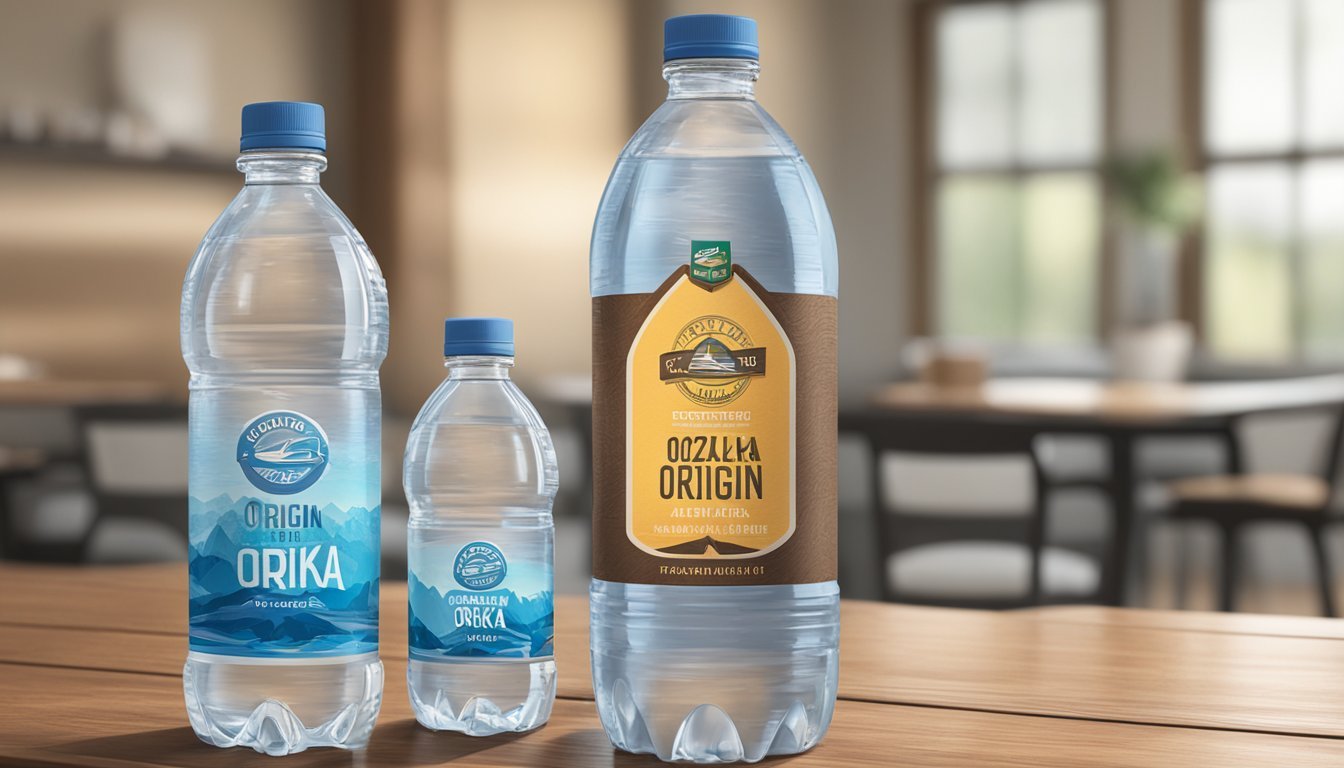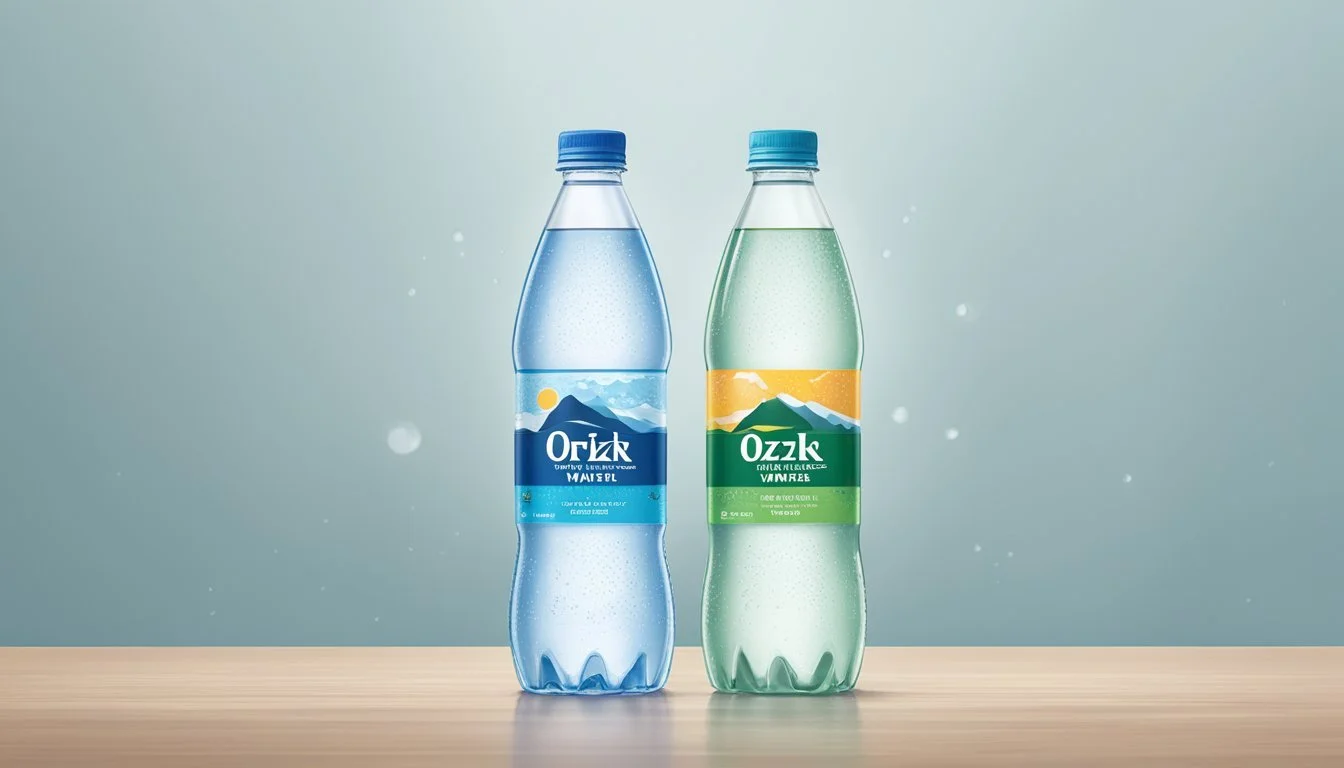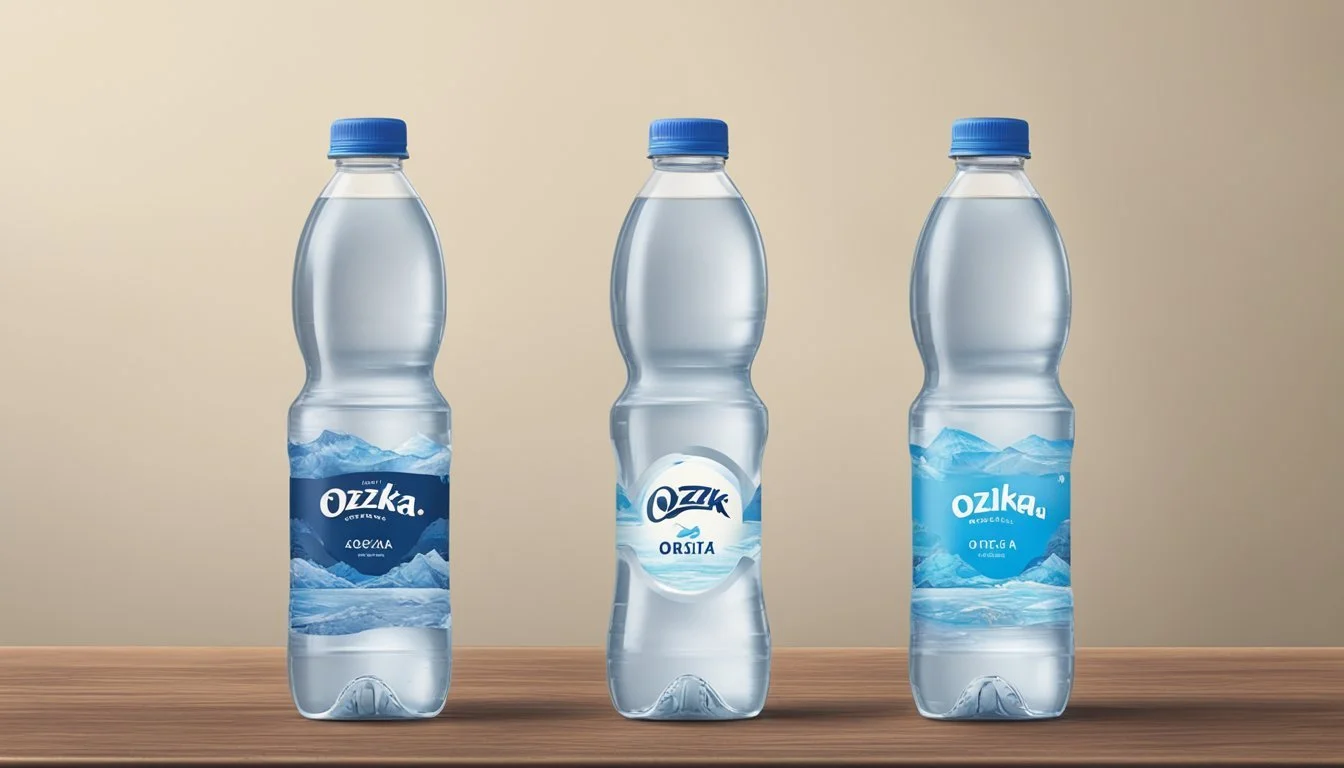Ozarka vs. Origin
A Comprehensive Comparison of Bottled Water Quality
Bottled water remains a staple for many consumers, who seek hydration on the go and value the convenience it offers. When deciding between Ozarka and Origin, two popular brands, the choice ultimately boils down to a few key factors. For those who prioritize locally sourced water with a longstanding heritage, Ozarka stands out with its Texas roots and commitment to quality.
Origin, on the other hand, captures attention with its promise of purity and environmentally conscious practices. Offering water that is sourced from pristine springs, it appeals to eco-minded consumers who are concerned about their environmental footprint. Consumers often find themselves weighing the taste, sourcing, and sustainability efforts of these brands when making their choice.
Each brand brings unique qualities to the table, giving water enthusiasts plenty to consider. By examining the origins, taste profiles, and environmental practices of Ozarka and Origin, this article aims to provide a clear comparison that will help consumers determine which bottled water aligns best with their personal values and needs.
Overview of Bottled Water
Bottled water offers a variety of sources and types that cater to different preferences and needs. This section covers the historical emergence, the diverse sources of bottled water, and the different types available in the market.
The Emergence of Bottled Waters
The bottled water industry began to gain popularity in the late 20th century. Convenience and concerns about tap water quality drove consumers to opt for bottled alternatives. Major brands utilized effective marketing strategies, showcasing their products as pure and superior.
Over the years, the industry has grown significantly. Today, it includes a wide range of products, from basic drinking water to premium mineral and spring water options. The rising demand reflects consumers' inclination towards purity and safety in their hydration choices.
Bottled Water Sources
The sources of bottled water can vary, with some brands sourcing from natural springs while others use municipal tap water that undergoes purification. Spring water is collected from natural springs and is often prized for its mineral content and natural purity.
Purified water usually starts as either tap or groundwater and undergoes extensive filtration processes such as reverse osmosis or distillation to remove impurities. These methods ensure high levels of purity, often exceeding those of tap water standards, making them a popular choice among health-conscious consumers.
Types of Bottled Water
Several types of bottled water are available, each defined by its processing method and source. Mineral water comes from mineral springs, containing various minerals that are beneficial to health. It is often sought after for its taste and potential health benefits.
Spring water is derived from underground formations, flowing naturally to the surface. It maintains its natural composition and is minimally processed. Purified water, on the other hand, is highly processed to remove impurities and can come from any source, including tap water.
Artesian water is drawn from a well that taps a confined aquifer, creating natural pressure. Each type offers unique characteristics, catering to different needs and preferences for hydration.
Understanding the Brands: Ozarka and Origin
Ozarka and Origin offer bottled water products with distinct qualities and sources. This comparison shines a light on their origins, quality, and unique attributes.
Ozarka: Texas Natural Spring Water
Ozarka is a well-known brand that sources its water from natural springs in Texas. This local approach emphasizes the brand's commitment to delivering
natural spring water that has a refreshing taste. Ozarka water undergoes a thorough filtration process to ensure
purity while retaining essential minerals that enhance its taste. Ozarka is frequently chosen for its regional character and consistent quality, providing hydration that residents trust.
The brand's connection to Texas gives it a unique identity and a loyal consumer base. Ozarka's packs are often available in multiple sizes, which makes it convenient for various needs. Despite regional pricing variations, it is generally known for being affordable.
Origin: Pure and Essential
Origin bottled water stands out for its focus on purity and essential quality. Origin sources its water from carefully selected locations, which are often renowned for their pristine natural environments.
The purification process employed by Origin aims to remove impurities while maintaining the essential minerals that contribute to its smooth taste. The brand is dedicated to offering water that meets stringent quality standards.
Origin's branding conveys a sense of premium quality, often appealing to consumers who seek high-purity water. The distinct packaging and meticulous filtration contribute to its reputation. Available in various sizes, Origin is ideal for those who prioritize quality in their hydration choices.
Health and Hydration
When comparing Ozarka and Origin bottled waters, it is crucial to look at their contributions to health and hydration levels. Both brands offer different benefits in terms of electrolytes, minerals, and pH levels.
The Role of Electrolytes and Minerals
Minerals and electrolytes like calcium and magnesium play a vital role in maintaining good health and proper hydration levels.
Ozarka water contains a variety of naturally occurring minerals. This includes calcium and magnesium, which can help support muscle and nerve function.
Origin focuses on providing purified water that is stripped of impurities but may lack the same level of beneficial minerals found in Ozarka.
Comparison:
Ozarka Origin Minerals Rich in natural minerals Purified with fewer minerals Electrolytes Contains essential electrolytes Minimal electrolytes
The presence of minerals in Ozarka can make it a better choice for those needing extra nutrients in their water. Conversely, Origin's purity may appeal to those looking for water with fewer contaminants.
Impact on Hydration
The effectiveness of water in maintaining hydration can significantly influence overall health. The pH level of water also plays a role.
Ozarka water comes with a neutral pH level, generally close to 7.0. Neutral pH can help in maintaining the body's natural balance, aiding in optimal hydration.
Origin water has a slightly acidic to neutral pH due to its purification process. While this is still effective in hydrating, it may not offer the same balance as neutral water.
Comparison:
Ozarka Origin pH Level Neutral (around 7.0) Slightly acidic to neutral Hydration Efficiency High Good
While both Ozarka and Origin are effective in hydrating the body, Ozarka's balance of electrolytes and neutral pH offers added benefits for health-conscious consumers. This might make Ozarka a favorable option for those looking to maintain an optimal hydration level coupled with essential nutrients.
Quality and Safety Standards
Ozarka and Origin each employ strict quality and safety measures to ensure their bottled water meets consumer expectations for purity and safety.
Filtration and Purification Processes
Both Ozarka and Origin utilize advanced filtration techniques to maintain water quality.
Ozarka employs natural spring sources primarily situated in Texas. Their water undergoes rigorous purification, including filtration, reverse osmosis, and ultraviolet light treatment. These methods ensure that impurities, such as heavy metals and microorganisms, are effectively removed.
Origin sources its water from pristine aquifers and utilizes similar purification methods. The process involves filtration, reverse osmosis, and ozone treatment. These techniques help maintain high levels of purity, removing contaminants like PFAS chemicals and other pollutants. Consumers can be confident that each bottle meets stringent quality standards.
FDA Regulations and Compliance
Both brands adhere closely to FDA regulations regarding bottled water.
The FDA sets strict guidelines for bottled water quality, including limits on contaminants like lead and arsenic. Ozarka ensures compliance through regular quality assurance tests and adherence to both federal and state regulations. This ensures the water is safe for consumption and meets bottled water standards.
Origin also complies with FDA regulations by conducting frequent tests and audits. These tests ensure the absence of harmful contaminants and confirm that the water meets health and safety standards. By doing so, both brands demonstrate their commitment to providing safe and quality products.
Contaminants and Safety Concerns
Addressing potential contaminants is a priority for both Ozarka and Origin.
Ozarka focuses on minimizing the presence of contaminants such as PFAS chemicals, heavy metals, and other pollutants. They implement rigorous testing protocols and state-of-the-art treatment processes to detect and remove these substances. Regular audits ensure that the water remains free from harmful levels of contaminants.
Origin similarly prioritizes the removal of contaminants. Their reverse osmosis and ozone treatment processes are specifically designed to target and eliminate a wide array of impurities, including arsenic, lead, and other heavy metals. This commitment to safety and quality helps build consumer trust and ensures the high standards of bottled water quality are reliably met.
Environmental Considerations
Both Ozarka and Origin bottled water brands bring essential environmental considerations to the table. Factors such as plastic waste, sustainability efforts, and the pursuit of eco-friendly alternatives play crucial roles in assessing each brand's environmental footprint.
Bottling and Packaging Impact
The type of materials used in bottling water significantly impacts the environment. Ozarka primarily uses plastic bottles, which contribute to plastic waste if not properly recycled. Plastic bottles are convenient but pose an environmental concern due to their long decomposition time and the potential for pollution.
Origin often opts for more sustainable packaging materials like recycled plastic, which helps reduce the environmental footprint. The use of recycled materials can mitigate the adverse effects associated with single-use plastics. Assessing the impact of packaging reveals the importance of choosing materials that are both functional and environmentally friendly.
Sustainability Efforts by Brands
Both brands have made visible efforts toward improving their sustainability profiles. Ozarka has initiated programs focused on decreasing its carbon footprint and increasing the use of renewable energy in production processes. Additionally, they promote the recycling of their bottles to offset the environmental impacts.
Origin emphasizes a more comprehensive approach to sustainability, incorporating advancements in production efficiency and water conservation techniques. They actively invest in developing recyclable and biodegradable packaging, aiming to lead the industry toward a more sustainable future. These sustainability initiatives are key to reducing long-term environmental impacts.
Eco-friendly Alternatives to Bottled Water
While bottled water can offer convenience, considering eco-friendly alternatives is crucial for minimizing environmental impact. Consumers might explore options like reusable water bottles made from stainless steel or glass, which significantly reduce reliance on single-use plastics.
Brands can also encourage eco-friendly practices by adopting bulk water dispensers in communities and workplaces, reducing the necessity for individual bottles. The adoption of these alternatives can contribute substantially to reducing plastic waste and fostering a sustainable lifestyle.
Taste and Mouthfeel Comparison
The taste and mouthfeel of bottled water can significantly influence consumer preferences. Both Ozarka and Origin waters have distinct characteristics that revolve around their mineral content and sources.
Factors Affecting Water Taste
Mineral Content:
Mineral content is a primary factor in determining water taste. Ozarka, sourced from natural springs in Texas, may have higher levels of calcium and magnesium, contributing to a slightly crisp taste. Origin, which might source from different springs, can have varying mineral contents that affect its flavor profile distinctly.
Source and Treatment Process:
The source of the water and its treatment process play crucial roles in overall taste. Ozarka’s spring water undergoes minimal processing, retaining a natural taste. If Origin uses a complex filtration system, it can achieve high purity but might lack some of the natural flavor found in Ozarka.
Presence of Naturally Occurring Electrolytes:
Naturally occurring electrolytes contribute to both taste and mouthfeel. Ozarka’s water likely contains electrolytes due to its natural sourcing, which can enhance its refreshing quality. If Origin’s water has fewer electrolytes, it might taste smoother but less robust.
Consumer Preferences and Perceptions
Taste Preferences:
Consumer preferences for water taste can vary widely. Some may prefer the slightly mineral-rich taste of Ozarka due to its natural spring source. Others might favor the possibly purer taste of Origin if they appreciate a clean and neutral flavor profile.
Mouthfeel:
Mouthfeel, or the texture of water in the mouth, is another important factor. Ozarka’s water may feel more substantial and refreshing because of its mineral content. Origin’s water, if highly purified, might offer a smoother, lighter mouthfeel, potentially appealing to those who prefer a more delicate texture.
Regional Influences:
Regional availability and familiarity also influence perception. People in Texas, more accustomed to Ozarka, may lean towards its taste. Meanwhile, those familiar with Origin might have a preference based on their regular consumption patterns.
Brand Loyalty:
Brand loyalty can affect consumer perceptions. Long-term users of Ozarka might perceive its taste differently than those who primarily drink Origin, reflecting subjective experiences shaped by consistent usage.
By understanding these elements, consumers can make informed choices about their preferred bottled water based on taste and mouthfeel.
Availability and Convenience
Ozarka and Origin bottled waters each provide unique options when it comes to availability and convenience. Both brands strive to cater to consumer needs with their distribution strategies and product formats.
Global Distribution and Accessibility
Ozarka primarily targets the United States market, with its water sourced from natural springs in Texas. It is a popular choice within the southern states but might be less available in other regions.
Origin, on the other hand, uses a more global distribution strategy. Sourced from pristine locations, it is more widely accessible across international markets. This broader reach makes it a convenient choice for consumers outside the US. Both brands comply with regulatory standards for bottled water, including those set forth by the International Bottled Water Association (IBWA).
Convenience of Different Formats
Ozarka offers a variety of formats, including single-serve bottles, multipacks, and larger gallon containers. This flexibility meets different consumer needs, from hydration on the go to household use. Their packaging options include both traditional plastic bottles and environmentally friendly boxed water.
Origin also provides various formats, including eco-friendly options such as boxed water and sparkling water. The availability of multiple packaging types makes it easier for consumers to choose a format that suits their lifestyle. Additionally, Origin often sells in bulk, reducing the cost per unit and enhancing convenience for regular buyers.
Price and Value Proposition
Ozarka and Origin offer distinct value propositions influenced by their unique sources and branding strategies, affecting their cost and perceived value among consumers.
Comparing Cost and Affordability
Ozarka, which sources its water from natural springs in Texas, tends to position itself at a slightly premium price point. This is largely due to its local sourcing and branding as 100% natural spring water.
In contrast, Origin sources its water from volcanic rock aquifers, typically resulting in a price range that varies based on geographical and logistical factors. Origin often markets its volcanic source as adding unique qualities to the water, potentially positioning it at a higher price.
Cost Comparison:
Brand Source Price Range (per liter) Ozarka Natural Spring (Texas) $0.50 - $1.50 Origin Volcanic Rock Aquifers $1.00 - $2.50
Branding and Consumer Value
Ozarka focuses on the local appeal and the notion of pure, untouched nature, attracting consumers who value transparent sourcing and the assurance of 100% natural spring water. The brand's reputation often justifies its slightly higher price through its dedication to quality and local authenticity.
Origin, on the other hand, leverages the exotic and premium image of volcanic rock filtration to enhance consumer perception. This creates a niche appeal, catering especially to those willing to pay more for what they perceive as superior quality and unique sourcing.
Branding for each adds significant value, shaping consumer expectations and their willingness to invest in these premium bottled waters. Ozarka's local, natural emphasis, versus Origin's exotic and premium branding, reflect in their pricing strategies and consumer bases.
More About Ozarka
Mountain Valley Spring Water vs Ozarka: Which Bottled Water is Better?
Ozarka vs Kirkland Signature: Which Bottled Water is Better?
Ozarka vs Richard's Rainwater: Which Bottled Water is Better?
Ozarka vs Whole Foods Italian Still Mineral water: Which Bottled Water is Better?







